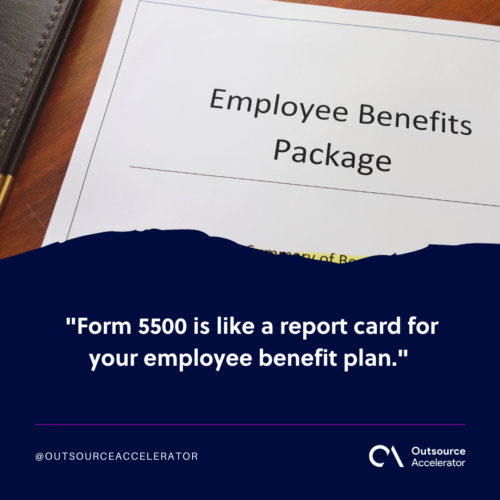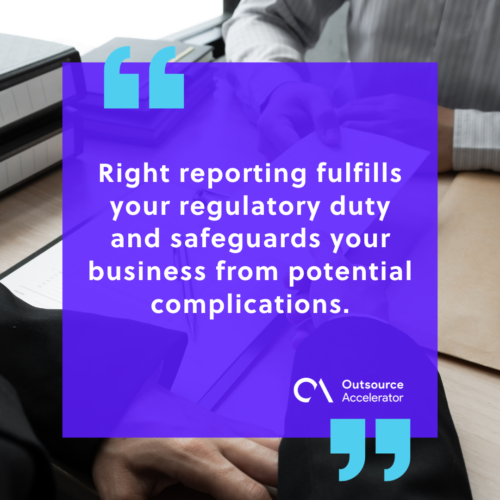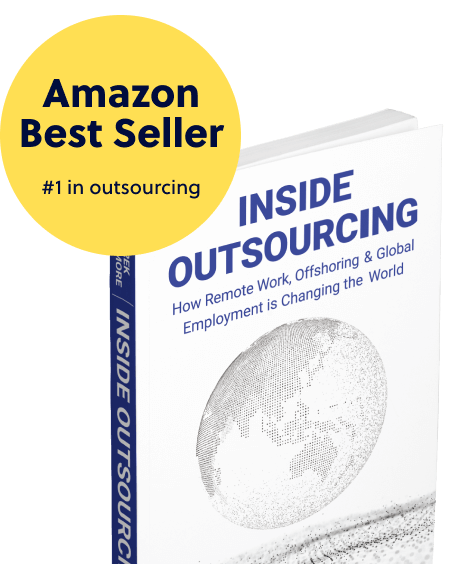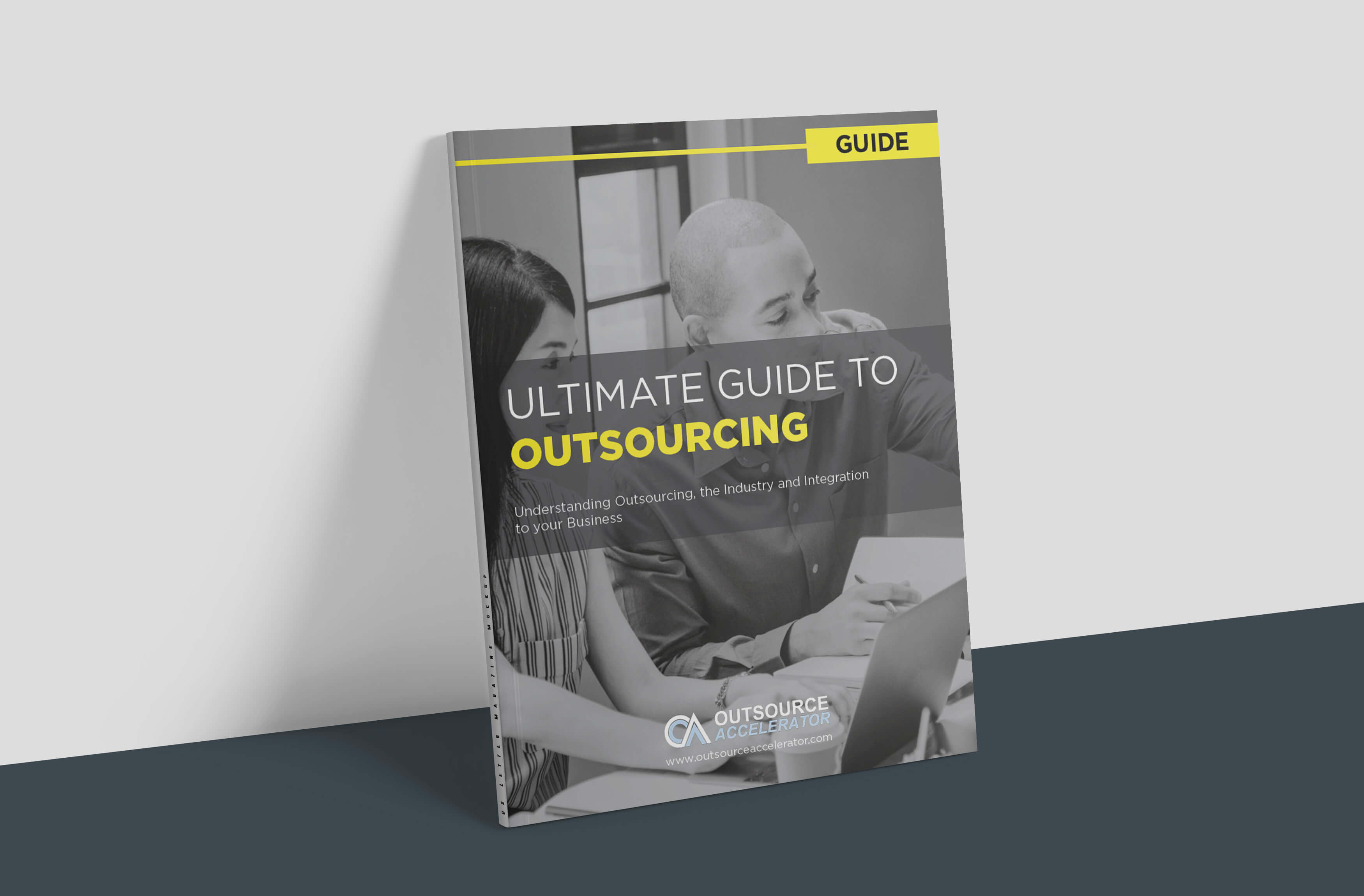A quick overview of Form 5500

Managing a business requires taking on various roles, and ensuring compliance with regulatory obligations is essential.
One such need is filing Form 5500.
This article will explore vital details about Form 5500, break down the filing process, and uncover common mistakes. We’ll also explore the benefits of accurate filing and discuss how to stay updated on regulatory changes.
What is a Form 5500?
Form 5500 is like a report card for your employee benefit plan. It’s a document that businesses need to fill out and submit each year to the Department of Labor.
This form details your plan’s financial health, investments, and operations.
It is a way to keep the government and your plan participants in the loop, ensuring transparency and regulation compliance.

Form 5500: Filing process
Form 5500’s filing process involves several steps and requirements.
Gather information
Collect all essential information regarding your employee benefits scheme before submitting the filing. The following data must be included:
- Financial information
- Participant data
- Details about plan investments.
The more genuine and comprehensive your information, the smoother the filing process.
Complete the form
Filling out Form 5500 involves providing straightforward details about your plan, such as:
- Number of participants
- Financial transactions
- Any significant plan changes
Keep it simple and precise.
Attach required schedules
Certain plans may require additional schedules. Think of these as supporting documents that provide extra context.
Don’t forget to attach them to ensure your filing is complete.
Review and sign
Take a moment to review your filled-out form. Ensure all the information is correct, and don’t forget to sign the form.
Accuracy is key to a successful filing.
File the form
Once you’ve verified everything is arranged correctly, submit your Form 5500.
Follow the submission guidelines diligently, and take comfort in knowing that you have fulfilled your regulatory duty.
Common mistakes to avoid in Form 5500 filing
Here are some common mistakes to avoid when filing Form 5500.
Late filing
It’s important to avoid a common mistake—make sure not to submit Form 5500 after the deadline.
Late filing can result in significant penalties. It’s essential to mark your calendar, ensure timely submission, set reminders, prioritize it, and save yourself from unnecessary headaches.
Incomplete or inaccurate information
Precision matters when it comes to Form 5500. Incomplete or inaccurate information can trigger audits and legal consequences.
Take the time to double-check your figures and details. Right reporting fulfills your regulatory duty and safeguards your business from potential complications.

Ignoring plan changes
Plans evolve as your business grows. If you’ve changed your employee benefit plan during the year, ensure these changes are correctly reflected in your Form 5500 filing.
Ignoring these adjustments can lead to discrepancies, potentially causing issues. Stay vigilant and ensure your filing reflects the current state of your benefit plan.
Benefits of accurate Form 5500 filing
Precise filing of Form 5500 goes beyond meeting a regulatory requirement; it brings many benefits that can positively impact your business.
Legal compliance
Exact filing ensures your business stays on the right side of the law. This not only helps avoid penalties but also builds trust with regulatory authorities.
Following regulations establishes a robust foundation for your business operations when you abide by the rules.
Audit preparedness
Correct Form 5500 filing positions your business well for potential audits. When your records are precise and up-to-date, the audit process becomes smoother.
This level of preparedness can save you time and resources, providing peace of mind in case of regulatory scrutiny.
Participant confidence
Exact filing instills confidence in your plan participants. When they see that their benefits are being meticulously managed and reported, it fosters trust.
Participant confidence contributes to a positive work environment and strengthens the employer-employee relationship.
Effective plan management
Beyond compliance, Form 5500 is a tool for effective plan management. Proper filing provides insights into the financial health of your employee benefit plan.
This information is invaluable for strategic decision-making, ensuring your plan aligns with the goals of your business.
A well-managed plan contributes to overall business stability and employee satisfaction.
Preserves reputation
In the business world, reputation is everything. Correct and on-time Form 5500 filing safeguards your reputation as you showcase your commitment to compliance and responsible business practices.
A positive reputation attracts top talent and establishes trust with clients, partners, and stakeholders.

How to stay updated on changes in Form 5500 regulations
Regulations are like the weather; they can change, and staying informed is essential to navigate smoothly.
Regarding Form 5500 filing, staying updated on regulations is a must. Here’s how:
Regular check-ins
Set a regular schedule to check for updates to Form 5500 regulations. Whether quarterly or annually, make it a routine to ensure you’re always working with the latest information.
Government resources
The Department of Labor (DOL) and the Internal Revenue Service (IRS) regularly publish updates and resources related to Form 5500. Check their websites or subscribe to newsletters to receive timely notifications.
Industry updates
Join forums, associations, or industry groups related to employee benefit plans. These platforms often distribute insights and updates, establishing a communal knowledge pool to stay ahead of changes.
Consult professionals
If navigating regulatory changes feels overwhelming, consider consulting with professionals specializing in employee benefits or compliance. Their expertise can be invaluable in ensuring your filing remains on the right track.
Simplicity and accuracy go hand in hand. Filing Form 5500 is not just a regulatory obligation; it’s a strategic move for:
- Fostering trust
- Managing your plan effectively
- Safeguarding your business’s reputation
Stay informed, file on time, and watch as your business benefits from the transparency and accountability that accurate filing brings.







 Independent
Independent




